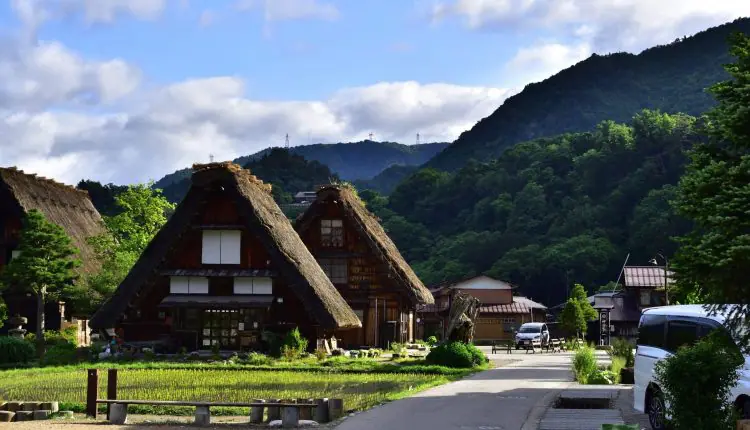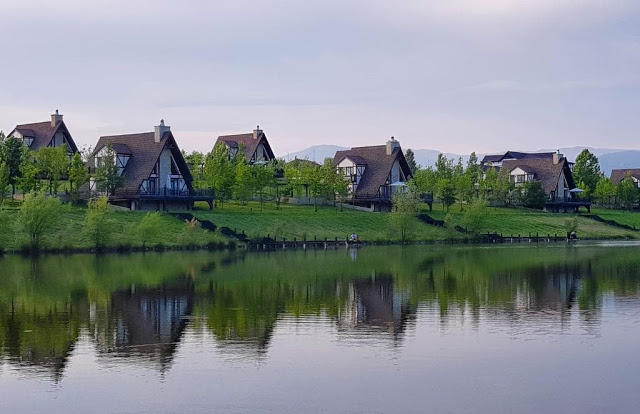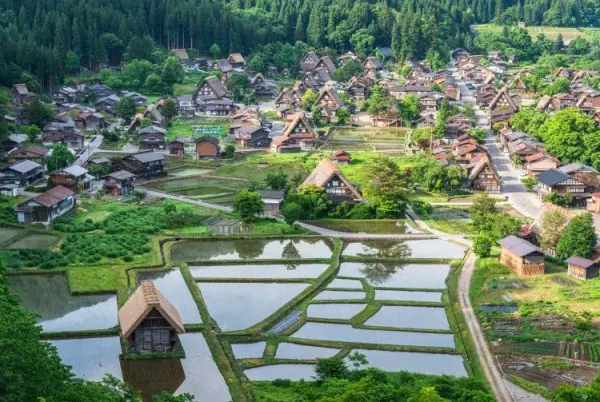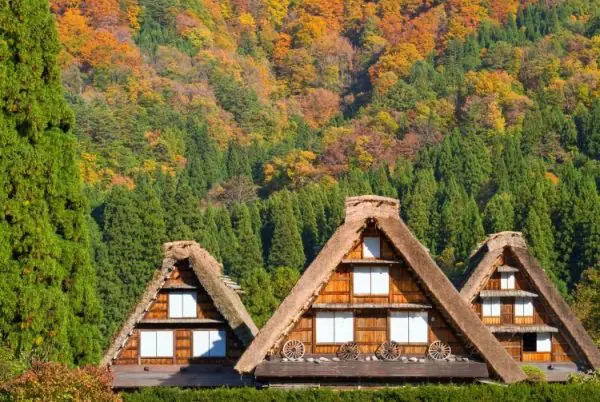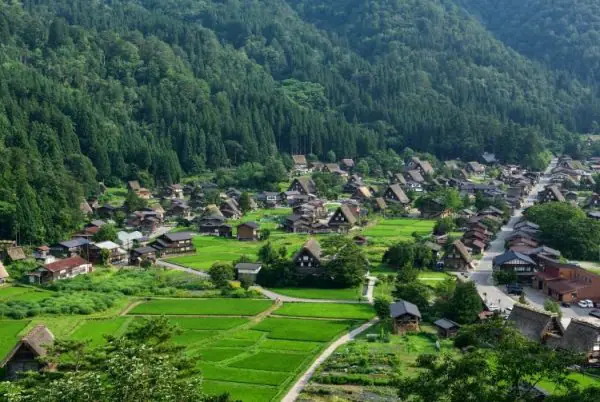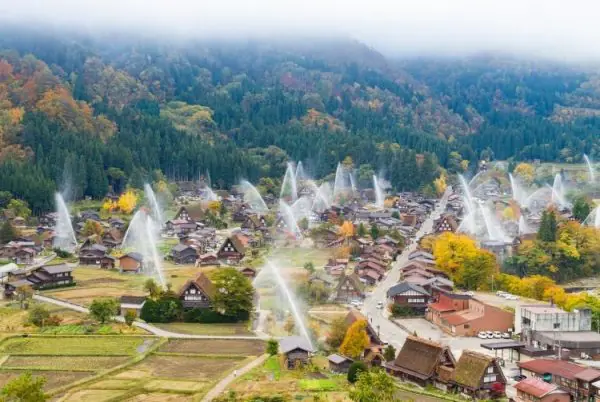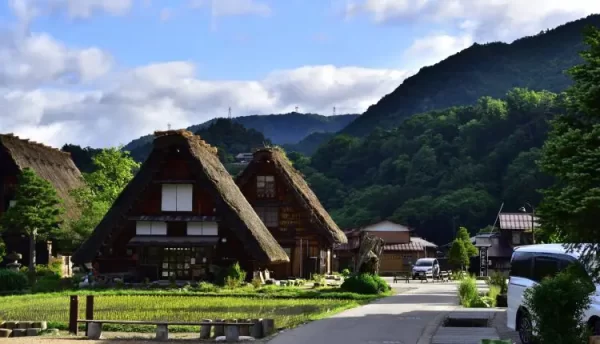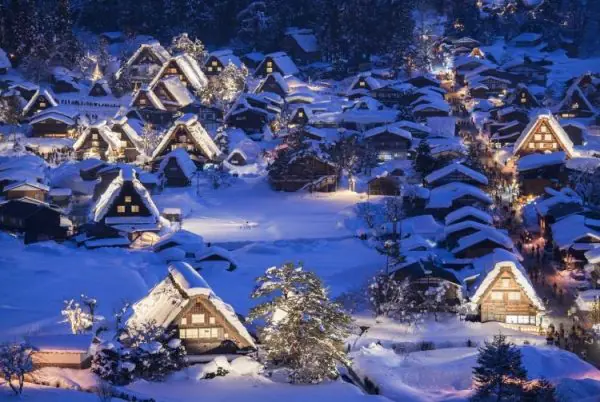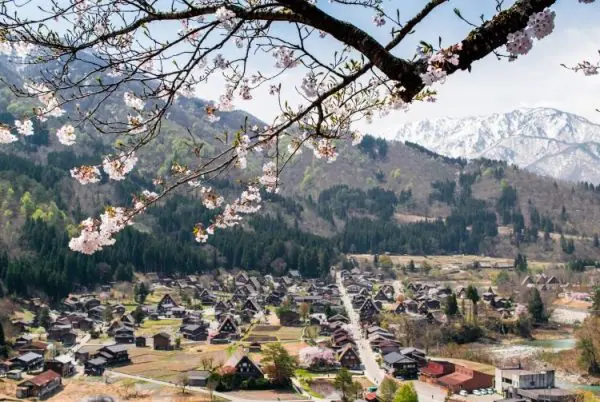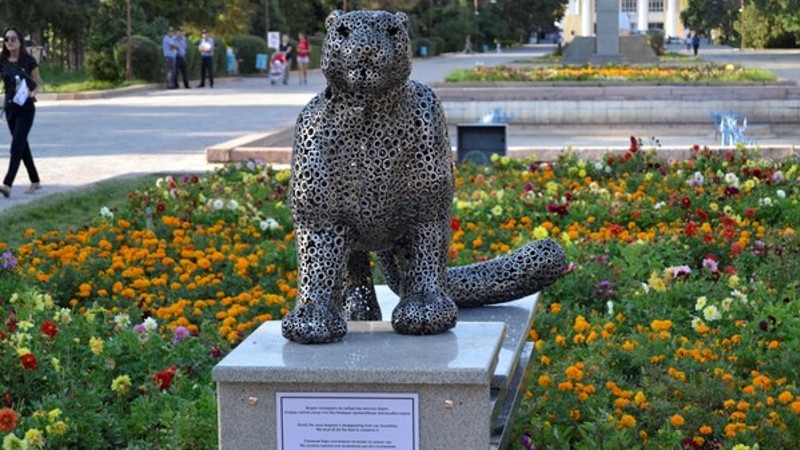Shirakawa-go Village
Enjoy a stay in a traditional house built without the use of nails
One of the most important areas to visit in Gifu is Shirakawa-go, steps away from Mt. Hakusan
The beauty of this village is beyond description, and UNESCO has listed it as a World Heritage Site.
Great activities and sights
- Scenes commemorating the ancient history of Japan
- The museum dedicated to silk, which is the region's most important export
How to access
We recommend going to Shirakawa-go by bus from JR Takayama Station.
From Nagoya and Gifu, you can take the JR Takaima Line to Takayama Station.
Buses to Shirakawa-go leave from Takayama Bus Center, and the journey takes about 50 minutes.
Start your tour from Ogimachi Village
Ogimachi is the center of Shirakawa-go, a small village of gasho-zukuri-style houses.
Read also:Travel to Antalya, the most beautiful tourist destinationThis type of building is characterized by its height and narrow spaces, as well as sloping thatched roofs
So don't miss visiting these houses during the winter snowfall season
Gassho-zukuri literally means “like preaching hands.”
Each of the houses is a rare masterpiece of carpentry art, as these houses were built without the use of nails
They are carefully interwoven beams, and are characterized by their solid construction, which made them stand up since the early nineteenth century AD in this country that is constantly exposed to earthquakes.
A trip to the ancient past
Many of the buildings have been turned into museums showcasing the area's history and unique architecture, as well as some of Shirakawa-go's major industries. Many of these houses are used as guesthouses providing overnight service for visitors.
Walking the streets and inhaling the scent of wood takes you on a journey to pre-modern Japan, or you can climb up to the Shirayama Observation Deck, to enjoy stunning views of the village from ages ago.
Gasho-zukuri Menkain Museum
Built in the open air in a village setting, this museum includes several buildings each with a specific function such as storerooms and a temple, in addition to the houses scattered throughout. You can watch displays of local handicrafts, some of which you can try yourself. In the area, you will also find several restaurants and souvenir shops; Which makes it an ideal spot to take some rest.
Read also:The 12 best hotels in Azerbaijan, and book them onlineDoboroko Festival
Doboroko is a local drink so popular that it has made it a staple of the Autumn Festival. It is an unfiltered type of sake, somewhat similar to homemade Japanese wine, and its manufacture is prohibited in most parts of Japan except for a few designated areas.
We invite you to see the Chichi-mai lion dance performances that take place in mid-October. During the rest of the year, you can do whatever you want at the Doboroku Matsuri Hall.
village homes
Some of these houses are still inhabited, so they are not open to visitors, but others are open to the public and undoubtedly worth a visit.
Surrounded by a beautiful Japanese garden, Wada House is located next to the bus stop in the center of Ogimachi Village.
The Kanda House, said to be more than 150 years old, has inscriptions carved into the roof framing by the original carpenter who built the house around 1850.
The Nagase house was the residence of a family of doctors and is now an exhibit of medical equipment from the Edo period (1603-1867) that both fascinates and unnerves visitors.
Read also:Stone Age Baku tourTajima House Museum of Silk Culture
This museum shows the history and steps of silk production, which was one of the most important industries in the village of Shirakawa-go, but in fact the Tajima House Museum is very much interested in reviving the traditional silk production industry.
Myozenji Temple Museum
The monk's residence next to the main temple, which is no longer in use, has been turned into a museum showcasing the history of the temple dating back to 1748. The temple itself houses a huge Buddha statue, and the bell tower and adjacent yew tree exude a scent of ancient Japanese history.
A village that sparkles in all seasons
Shirakawa-go is rewarding when you come back, as the changing seasons bring out its different aspects. Shirakawa-go is always at its best with its cherry blossoms in gorgeous summer, dark autumn leaves, and quiet, snowy winters.
You can get around most of Shirakawa-go in a couple of hours, but you'll need more time if you really want to soak up the charm
Imagine a renewed life in rural Japan, escaping from the pressures of fast-paced contemporary life. We strongly advise you to stay overnight in one of the guesthouses, but do not forget to book your accommodation in advance.
